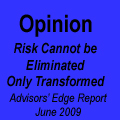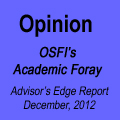Broad markets were hammered today, with some help from the Stable Genius:
Stocks fell on Tuesday, after President Trump sowed confusion over the status of a truce in the trade war between the United States and China, while the bond market, often considered a safe haven for investors, sent a stark warning about expectations for an economic slowdown.
The S&P 500 dropped more than 3 percent, with economically sensitive financial and transportation stocks sliding.
The warning from the bond market came through what’s known as the yield curve, the difference between interest rates on short-term United States government bonds, such as two-year notes, and longer term bonds, such as the 10-year Treasury.
…
The gap between the two-year and 10-year yields has decreased to less than 0.12 percentage points — the lowest it has been since before the financial crisis. Many analysts say it could soon fall below zero, a phenomenon known as an “inversion.”
…
The Trump administration and Beijing said on Saturday that they had essentially reached an agreement to pause the trade war for 90 days while the two sides try and reach a formal trade deal. The S&P 500-stock index had climbed more than 1 percent on Monday following news of that deal.But Mr. Trump’s tweet on Tuesday seemed to undercut the promise of that agreement.
I’m not entirely happy about reproducing tweets to convey what in any other administration would be a major policy announcement, but nobody cares about my happiness.
| HIMIPref™ Preferred Indices These values reflect the December 2008 revision of the HIMIPref™ Indices Values are provisional and are finalized monthly |
|||||||
| Index | Mean Current Yield (at bid) |
Median YTW |
Median Average Trading Value |
Median Mod Dur (YTW) |
Issues | Day’s Perf. | Index Value |
| Ratchet | 0.00 % | 0.00 % | 0 | 0.00 | 0 | -1.6093 % | 2,594.8 |
| FixedFloater | 0.00 % | 0.00 % | 0 | 0.00 | 0 | -1.6093 % | 4,761.4 |
| Floater | 4.48 % | 4.82 % | 39,192 | 15.74 | 4 | -1.6093 % | 2,744.0 |
| OpRet | 0.00 % | 0.00 % | 0 | 0.00 | 0 | -0.1395 % | 3,171.6 |
| SplitShare | 4.64 % | 5.32 % | 86,243 | 4.63 | 7 | -0.1395 % | 3,787.6 |
| Interest-Bearing | 0.00 % | 0.00 % | 0 | 0.00 | 0 | -0.1395 % | 2,955.2 |
| Perpetual-Premium | 5.60 % | 3.05 % | 129,340 | 0.08 | 2 | -0.3174 % | 2,857.1 |
| Perpetual-Discount | 5.75 % | 5.93 % | 72,832 | 13.94 | 33 | 0.2731 % | 2,867.5 |
| FixedReset Disc | 5.01 % | 5.62 % | 191,354 | 14.48 | 66 | -1.8832 % | 2,237.7 |
| Deemed-Retractible | 5.54 % | 7.60 % | 90,205 | 5.17 | 27 | -0.0217 % | 2,856.5 |
| FloatingReset | 4.10 % | 5.17 % | 34,815 | 2.99 | 7 | -1.9866 % | 2,506.5 |
| FixedReset Prem | 5.17 % | 4.39 % | 290,205 | 2.32 | 14 | 0.0531 % | 2,504.1 |
| FixedReset Bank Non | 2.98 % | 4.16 % | 121,847 | 2.94 | 6 | 0.0000 % | 2,568.9 |
| FixedReset Ins Non | 4.96 % | 8.13 % | 125,132 | 5.22 | 22 | -0.8790 % | 2,266.9 |
| Performance Highlights | |||
| Issue | Index | Change | Notes |
| TRP.PR.F | FloatingReset | -7.16 % | YTW SCENARIO Maturity Type : Limit Maturity Maturity Date : 2048-12-04 Maturity Price : 15.55 Evaluated at bid price : 15.55 Bid-YTW : 5.82 % |
| HSE.PR.A | FixedReset Disc | -6.88 % | YTW SCENARIO Maturity Type : Limit Maturity Maturity Date : 2048-12-04 Maturity Price : 13.40 Evaluated at bid price : 13.40 Bid-YTW : 6.95 % |
| TRP.PR.H | FloatingReset | -6.45 % | YTW SCENARIO Maturity Type : Limit Maturity Maturity Date : 2048-12-04 Maturity Price : 13.05 Evaluated at bid price : 13.05 Bid-YTW : 5.71 % |
| TRP.PR.B | FixedReset Disc | -5.84 % | YTW SCENARIO Maturity Type : Limit Maturity Maturity Date : 2048-12-04 Maturity Price : 13.06 Evaluated at bid price : 13.06 Bid-YTW : 6.46 % |
| TRP.PR.E | FixedReset Disc | -5.34 % | YTW SCENARIO Maturity Type : Limit Maturity Maturity Date : 2048-12-04 Maturity Price : 17.90 Evaluated at bid price : 17.90 Bid-YTW : 6.44 % |
| TRP.PR.A | FixedReset Disc | -5.26 % | YTW SCENARIO Maturity Type : Limit Maturity Maturity Date : 2048-12-04 Maturity Price : 15.66 Evaluated at bid price : 15.66 Bid-YTW : 6.53 % |
| TRP.PR.C | FixedReset Disc | -5.03 % | YTW SCENARIO Maturity Type : Limit Maturity Maturity Date : 2048-12-04 Maturity Price : 14.15 Evaluated at bid price : 14.15 Bid-YTW : 6.35 % |
| CU.PR.C | FixedReset Disc | -4.89 % | YTW SCENARIO Maturity Type : Limit Maturity Maturity Date : 2048-12-04 Maturity Price : 18.30 Evaluated at bid price : 18.30 Bid-YTW : 6.00 % |
| EMA.PR.F | FixedReset Disc | -4.56 % | YTW SCENARIO Maturity Type : Limit Maturity Maturity Date : 2048-12-04 Maturity Price : 19.25 Evaluated at bid price : 19.25 Bid-YTW : 6.30 % |
| TRP.PR.D | FixedReset Disc | -4.41 % | YTW SCENARIO Maturity Type : Limit Maturity Maturity Date : 2048-12-04 Maturity Price : 17.97 Evaluated at bid price : 17.97 Bid-YTW : 6.46 % |
| VNR.PR.A | FixedReset Disc | -4.35 % | YTW SCENARIO Maturity Type : Limit Maturity Maturity Date : 2048-12-04 Maturity Price : 21.10 Evaluated at bid price : 21.10 Bid-YTW : 5.93 % |
| BAM.PF.G | FixedReset Disc | -3.90 % | YTW SCENARIO Maturity Type : Limit Maturity Maturity Date : 2048-12-04 Maturity Price : 20.18 Evaluated at bid price : 20.18 Bid-YTW : 6.31 % |
| BIP.PR.D | FixedReset Disc | -3.85 % | YTW SCENARIO Maturity Type : Limit Maturity Maturity Date : 2048-12-04 Maturity Price : 21.90 Evaluated at bid price : 22.23 Bid-YTW : 6.51 % |
| BAM.PF.E | FixedReset Disc | -3.59 % | YTW SCENARIO Maturity Type : Limit Maturity Maturity Date : 2048-12-04 Maturity Price : 19.33 Evaluated at bid price : 19.33 Bid-YTW : 6.23 % |
| BMO.PR.T | FixedReset Disc | -3.52 % | YTW SCENARIO Maturity Type : Limit Maturity Maturity Date : 2048-12-04 Maturity Price : 20.00 Evaluated at bid price : 20.00 Bid-YTW : 5.59 % |
| BAM.PF.B | FixedReset Disc | -3.50 % | YTW SCENARIO Maturity Type : Limit Maturity Maturity Date : 2048-12-04 Maturity Price : 19.83 Evaluated at bid price : 19.83 Bid-YTW : 6.20 % |
| BAM.PR.B | Floater | -3.38 % | YTW SCENARIO Maturity Type : Limit Maturity Maturity Date : 2048-12-04 Maturity Price : 14.30 Evaluated at bid price : 14.30 Bid-YTW : 4.91 % |
| BAM.PF.A | FixedReset Disc | -3.00 % | YTW SCENARIO Maturity Type : Limit Maturity Maturity Date : 2048-12-04 Maturity Price : 21.00 Evaluated at bid price : 21.00 Bid-YTW : 6.19 % |
| TRP.PR.G | FixedReset Disc | -2.99 % | YTW SCENARIO Maturity Type : Limit Maturity Maturity Date : 2048-12-04 Maturity Price : 19.45 Evaluated at bid price : 19.45 Bid-YTW : 6.48 % |
| TD.PF.D | FixedReset Disc | -2.95 % | YTW SCENARIO Maturity Type : Limit Maturity Maturity Date : 2048-12-04 Maturity Price : 21.40 Evaluated at bid price : 21.72 Bid-YTW : 5.65 % |
| NA.PR.W | FixedReset Disc | -2.80 % | YTW SCENARIO Maturity Type : Limit Maturity Maturity Date : 2048-12-04 Maturity Price : 19.44 Evaluated at bid price : 19.44 Bid-YTW : 5.75 % |
| BAM.PF.F | FixedReset Disc | -2.78 % | YTW SCENARIO Maturity Type : Limit Maturity Maturity Date : 2048-12-04 Maturity Price : 20.27 Evaluated at bid price : 20.27 Bid-YTW : 6.35 % |
| BAM.PR.R | FixedReset Disc | -2.77 % | YTW SCENARIO Maturity Type : Limit Maturity Maturity Date : 2048-12-04 Maturity Price : 17.23 Evaluated at bid price : 17.23 Bid-YTW : 6.30 % |
| TD.PF.E | FixedReset Disc | -2.60 % | YTW SCENARIO Maturity Type : Limit Maturity Maturity Date : 2048-12-04 Maturity Price : 21.67 Evaluated at bid price : 22.11 Bid-YTW : 5.61 % |
| BIP.PR.A | FixedReset Disc | -2.60 % | YTW SCENARIO Maturity Type : Limit Maturity Maturity Date : 2048-12-04 Maturity Price : 20.26 Evaluated at bid price : 20.26 Bid-YTW : 6.99 % |
| PWF.PR.P | FixedReset Disc | -2.41 % | YTW SCENARIO Maturity Type : Limit Maturity Maturity Date : 2048-12-04 Maturity Price : 16.21 Evaluated at bid price : 16.21 Bid-YTW : 5.65 % |
| HSE.PR.C | FixedReset Disc | -2.40 % | YTW SCENARIO Maturity Type : Limit Maturity Maturity Date : 2048-12-04 Maturity Price : 19.50 Evaluated at bid price : 19.50 Bid-YTW : 6.78 % |
| NA.PR.E | FixedReset Disc | -2.38 % | YTW SCENARIO Maturity Type : Limit Maturity Maturity Date : 2048-12-04 Maturity Price : 20.50 Evaluated at bid price : 20.50 Bid-YTW : 5.84 % |
| MFC.PR.Q | FixedReset Ins Non | -2.38 % | YTW SCENARIO Maturity Type : Hard Maturity Maturity Date : 2025-01-31 Maturity Price : 25.00 Evaluated at bid price : 20.10 Bid-YTW : 8.93 % |
| TD.PF.B | FixedReset Disc | -2.34 % | YTW SCENARIO Maturity Type : Limit Maturity Maturity Date : 2048-12-04 Maturity Price : 20.41 Evaluated at bid price : 20.41 Bid-YTW : 5.53 % |
| CM.PR.O | FixedReset Disc | -2.32 % | YTW SCENARIO Maturity Type : Limit Maturity Maturity Date : 2048-12-04 Maturity Price : 20.18 Evaluated at bid price : 20.18 Bid-YTW : 5.65 % |
| GWO.PR.N | FixedReset Ins Non | -2.27 % | YTW SCENARIO Maturity Type : Hard Maturity Maturity Date : 2025-01-31 Maturity Price : 25.00 Evaluated at bid price : 15.52 Bid-YTW : 11.85 % |
| MFC.PR.N | FixedReset Ins Non | -2.23 % | YTW SCENARIO Maturity Type : Hard Maturity Maturity Date : 2025-01-31 Maturity Price : 25.00 Evaluated at bid price : 18.88 Bid-YTW : 9.75 % |
| IFC.PR.G | FixedReset Ins Non | -2.16 % | YTW SCENARIO Maturity Type : Hard Maturity Maturity Date : 2025-01-31 Maturity Price : 25.00 Evaluated at bid price : 21.72 Bid-YTW : 7.83 % |
| MFC.PR.M | FixedReset Ins Non | -2.15 % | YTW SCENARIO Maturity Type : Hard Maturity Maturity Date : 2025-01-31 Maturity Price : 25.00 Evaluated at bid price : 19.10 Bid-YTW : 9.64 % |
| HSE.PR.E | FixedReset Disc | -2.14 % | YTW SCENARIO Maturity Type : Limit Maturity Maturity Date : 2048-12-04 Maturity Price : 20.55 Evaluated at bid price : 20.55 Bid-YTW : 6.90 % |
| BAM.PR.C | Floater | -2.09 % | YTW SCENARIO Maturity Type : Limit Maturity Maturity Date : 2048-12-04 Maturity Price : 14.49 Evaluated at bid price : 14.49 Bid-YTW : 4.84 % |
| CM.PR.S | FixedReset Disc | -2.08 % | YTW SCENARIO Maturity Type : Limit Maturity Maturity Date : 2048-12-04 Maturity Price : 20.76 Evaluated at bid price : 20.76 Bid-YTW : 5.64 % |
| NA.PR.G | FixedReset Disc | -1.97 % | YTW SCENARIO Maturity Type : Limit Maturity Maturity Date : 2048-12-04 Maturity Price : 21.88 Evaluated at bid price : 22.35 Bid-YTW : 5.59 % |
| RY.PR.M | FixedReset Disc | -1.90 % | YTW SCENARIO Maturity Type : Limit Maturity Maturity Date : 2048-12-04 Maturity Price : 21.12 Evaluated at bid price : 21.12 Bid-YTW : 5.60 % |
| MFC.PR.J | FixedReset Ins Non | -1.88 % | YTW SCENARIO Maturity Type : Hard Maturity Maturity Date : 2025-01-31 Maturity Price : 25.00 Evaluated at bid price : 21.39 Bid-YTW : 7.81 % |
| EMA.PR.H | FixedReset Disc | -1.84 % | YTW SCENARIO Maturity Type : Limit Maturity Maturity Date : 2048-12-04 Maturity Price : 22.78 Evaluated at bid price : 23.95 Bid-YTW : 5.09 % |
| TD.PF.C | FixedReset Disc | -1.70 % | YTW SCENARIO Maturity Type : Limit Maturity Maturity Date : 2048-12-04 Maturity Price : 20.25 Evaluated at bid price : 20.25 Bid-YTW : 5.52 % |
| MFC.PR.L | FixedReset Ins Non | -1.68 % | YTW SCENARIO Maturity Type : Hard Maturity Maturity Date : 2025-01-31 Maturity Price : 25.00 Evaluated at bid price : 18.68 Bid-YTW : 9.94 % |
| CU.PR.I | FixedReset Disc | -1.65 % | YTW SCENARIO Maturity Type : Call Maturity Date : 2020-12-01 Maturity Price : 25.00 Evaluated at bid price : 24.50 Bid-YTW : 5.62 % |
| PWF.PR.Q | FloatingReset | -1.62 % | YTW SCENARIO Maturity Type : Limit Maturity Maturity Date : 2048-12-04 Maturity Price : 18.25 Evaluated at bid price : 18.25 Bid-YTW : 4.56 % |
| MFC.PR.H | FixedReset Ins Non | -1.59 % | YTW SCENARIO Maturity Type : Hard Maturity Maturity Date : 2025-01-31 Maturity Price : 25.00 Evaluated at bid price : 21.67 Bid-YTW : 8.13 % |
| NA.PR.C | FixedReset Disc | -1.58 % | YTW SCENARIO Maturity Type : Limit Maturity Maturity Date : 2048-12-04 Maturity Price : 22.35 Evaluated at bid price : 23.00 Bid-YTW : 5.85 % |
| BNS.PR.I | FixedReset Disc | -1.39 % | YTW SCENARIO Maturity Type : Limit Maturity Maturity Date : 2048-12-04 Maturity Price : 22.13 Evaluated at bid price : 22.76 Bid-YTW : 5.22 % |
| BAM.PR.Z | FixedReset Disc | -1.28 % | YTW SCENARIO Maturity Type : Limit Maturity Maturity Date : 2048-12-04 Maturity Price : 20.76 Evaluated at bid price : 20.76 Bid-YTW : 6.19 % |
| SLF.PR.A | Deemed-Retractible | -1.22 % | YTW SCENARIO Maturity Type : Hard Maturity Maturity Date : 2025-01-31 Maturity Price : 25.00 Evaluated at bid price : 20.17 Bid-YTW : 8.86 % |
| BMO.PR.S | FixedReset Disc | -1.20 % | YTW SCENARIO Maturity Type : Limit Maturity Maturity Date : 2048-12-04 Maturity Price : 20.65 Evaluated at bid price : 20.65 Bid-YTW : 5.53 % |
| TD.PF.A | FixedReset Disc | -1.15 % | YTW SCENARIO Maturity Type : Limit Maturity Maturity Date : 2048-12-04 Maturity Price : 20.58 Evaluated at bid price : 20.58 Bid-YTW : 5.44 % |
| MFC.PR.F | FixedReset Ins Non | -1.15 % | YTW SCENARIO Maturity Type : Hard Maturity Maturity Date : 2025-01-31 Maturity Price : 25.00 Evaluated at bid price : 15.50 Bid-YTW : 11.83 % |
| BMO.PR.W | FixedReset Disc | -1.07 % | YTW SCENARIO Maturity Type : Limit Maturity Maturity Date : 2048-12-04 Maturity Price : 20.25 Evaluated at bid price : 20.25 Bid-YTW : 5.48 % |
| MFC.PR.G | FixedReset Ins Non | -1.06 % | YTW SCENARIO Maturity Type : Hard Maturity Maturity Date : 2025-01-31 Maturity Price : 25.00 Evaluated at bid price : 20.51 Bid-YTW : 8.26 % |
| BAM.PR.M | Perpetual-Discount | 1.04 % | YTW SCENARIO Maturity Type : Limit Maturity Maturity Date : 2048-12-04 Maturity Price : 19.45 Evaluated at bid price : 19.45 Bid-YTW : 6.23 % |
| CU.PR.D | Perpetual-Discount | 1.08 % | YTW SCENARIO Maturity Type : Limit Maturity Maturity Date : 2048-12-04 Maturity Price : 21.47 Evaluated at bid price : 21.47 Bid-YTW : 5.75 % |
| POW.PR.D | Perpetual-Discount | 1.13 % | YTW SCENARIO Maturity Type : Limit Maturity Maturity Date : 2048-12-04 Maturity Price : 21.47 Evaluated at bid price : 21.47 Bid-YTW : 5.92 % |
| Volume Highlights | |||
| Issue | Index | Shares Traded |
Notes |
| TRP.PR.C | FixedReset Disc | 89,382 | YTW SCENARIO Maturity Type : Limit Maturity Maturity Date : 2048-12-04 Maturity Price : 14.15 Evaluated at bid price : 14.15 Bid-YTW : 6.35 % |
| RY.PR.Q | FixedReset Prem | 88,183 | YTW SCENARIO Maturity Type : Call Maturity Date : 2021-05-24 Maturity Price : 25.00 Evaluated at bid price : 25.77 Bid-YTW : 4.26 % |
| TD.PF.A | FixedReset Disc | 79,564 | YTW SCENARIO Maturity Type : Limit Maturity Maturity Date : 2048-12-04 Maturity Price : 20.58 Evaluated at bid price : 20.58 Bid-YTW : 5.44 % |
| PWF.PR.S | Perpetual-Discount | 63,378 | YTW SCENARIO Maturity Type : Limit Maturity Maturity Date : 2048-12-04 Maturity Price : 20.68 Evaluated at bid price : 20.68 Bid-YTW : 5.88 % |
| CM.PR.Q | FixedReset Disc | 58,666 | YTW SCENARIO Maturity Type : Limit Maturity Maturity Date : 2048-12-04 Maturity Price : 21.54 Evaluated at bid price : 21.91 Bid-YTW : 5.57 % |
| BMO.PR.Y | FixedReset Disc | 50,615 | YTW SCENARIO Maturity Type : Limit Maturity Maturity Date : 2048-12-04 Maturity Price : 21.37 Evaluated at bid price : 21.68 Bid-YTW : 5.57 % |
| There were 62 other index-included issues trading in excess of 10,000 shares. | |||
| Wide Spread Highlights | ||
| Issue | Index | Quote Data and Yield Notes |
| TRP.PR.E | FixedReset Disc | Quote: 17.90 – 18.87 Spot Rate : 0.9700 Average : 0.6080 YTW SCENARIO |
| TRP.PR.F | FloatingReset | Quote: 15.55 – 16.50 Spot Rate : 0.9500 Average : 0.6026 YTW SCENARIO |
| VNR.PR.A | FixedReset Disc | Quote: 21.10 – 22.02 Spot Rate : 0.9200 Average : 0.6005 YTW SCENARIO |
| TD.PF.D | FixedReset Disc | Quote: 21.72 – 22.34 Spot Rate : 0.6200 Average : 0.3815 YTW SCENARIO |
| TRP.PR.D | FixedReset Disc | Quote: 17.97 – 18.55 Spot Rate : 0.5800 Average : 0.3496 YTW SCENARIO |
| TRP.PR.A | FixedReset Disc | Quote: 15.66 – 16.35 Spot Rate : 0.6900 Average : 0.4631 YTW SCENARIO |


















































































































BIG.PR.D to Mature on Schedule
Tuesday, December 4th, 2018Timbercreek Asset Management Inc. has announced:
BIG.PR.D has not been tracked by HIMIPref™, as it was too small to allow reasonable expectations of efficient trading.
Posted in Issue Comments | No Comments »